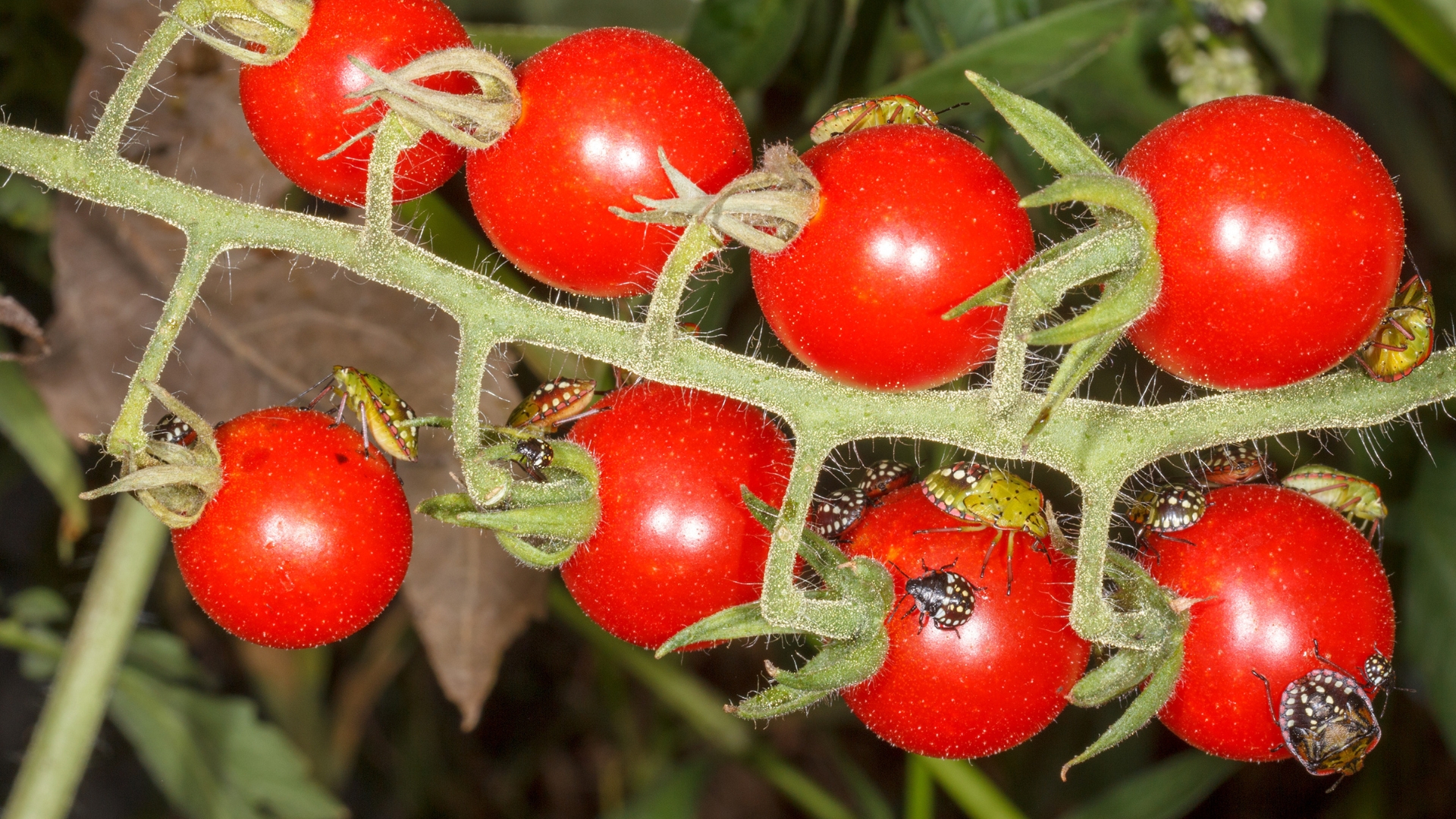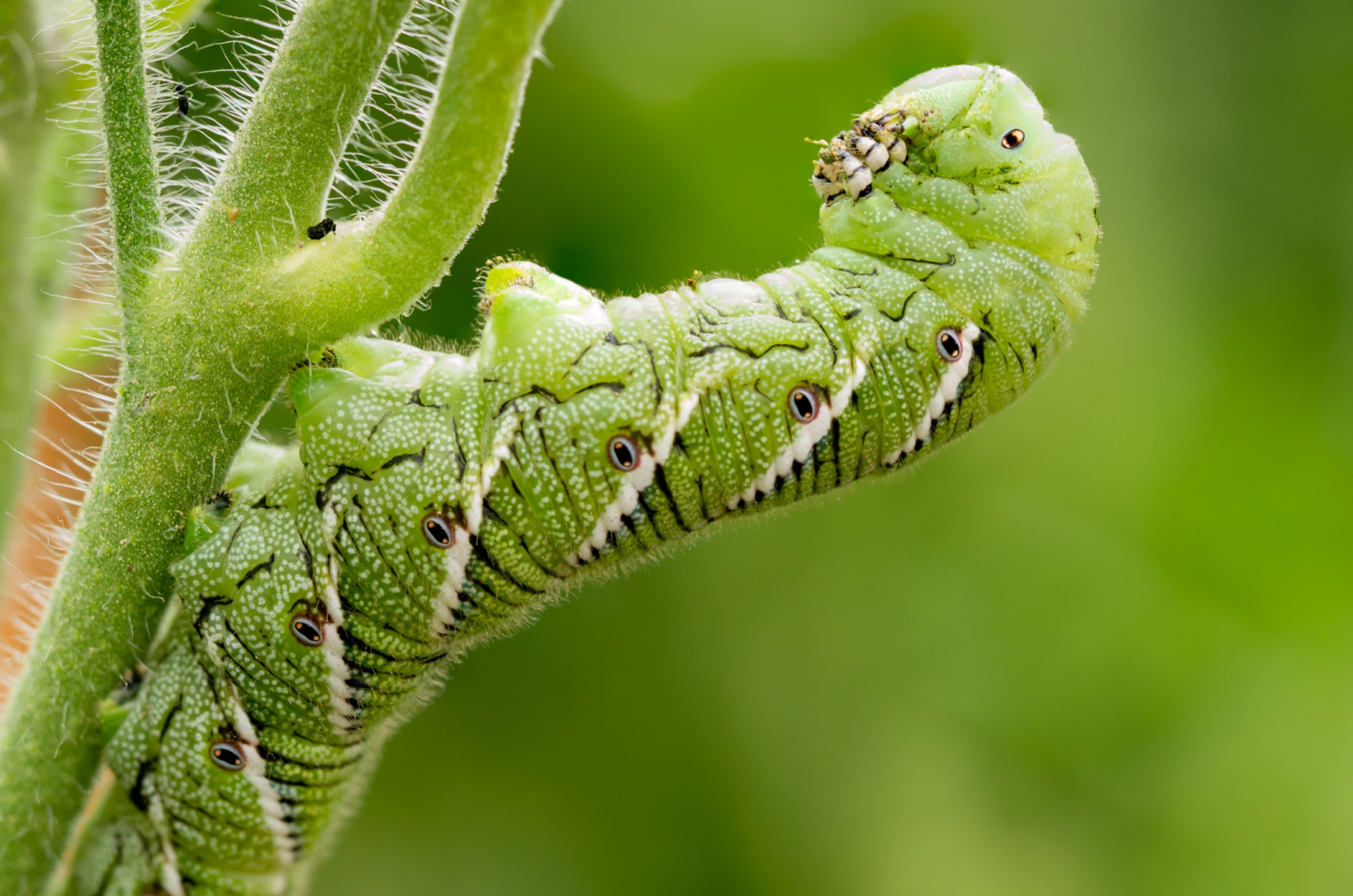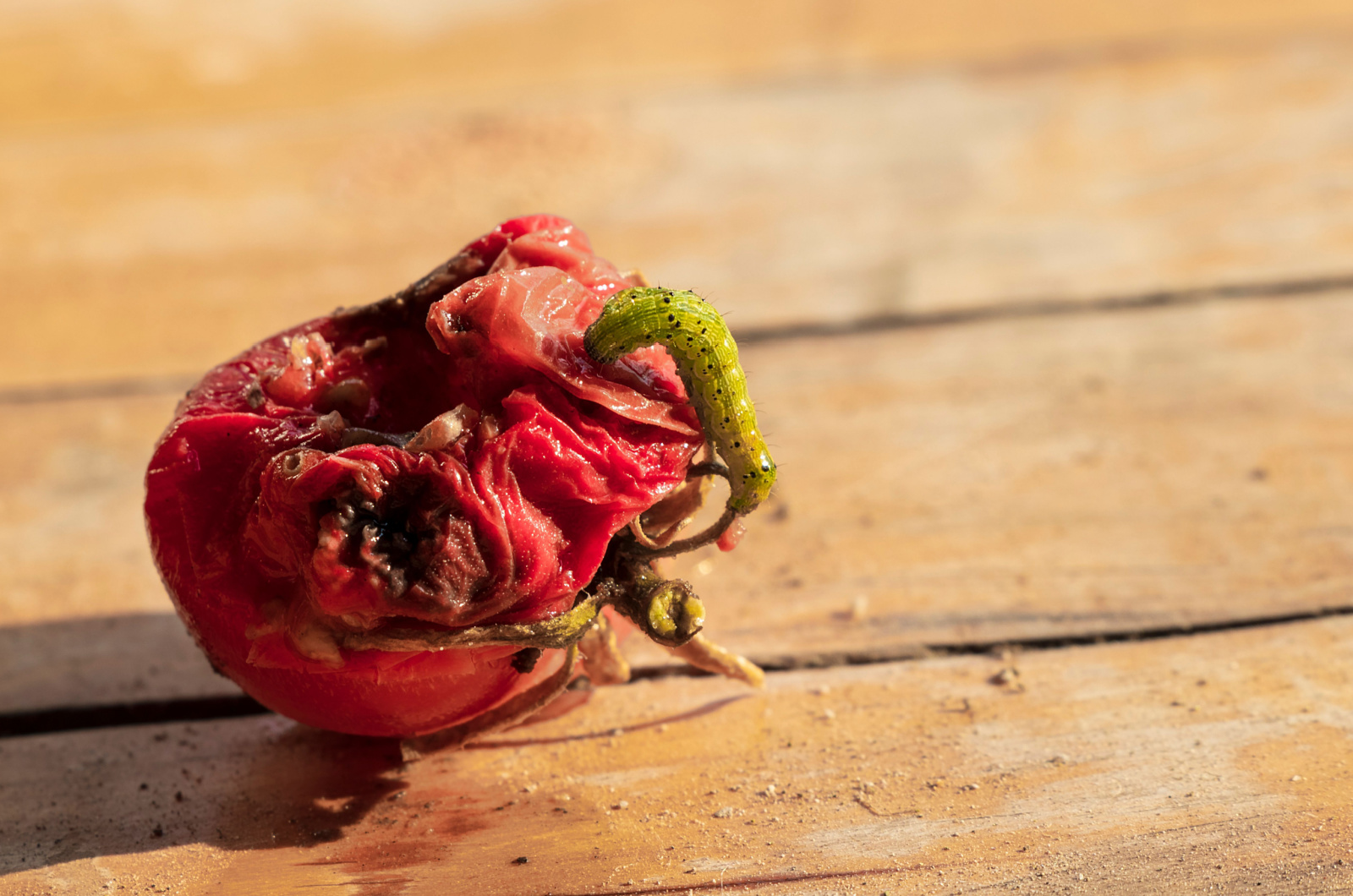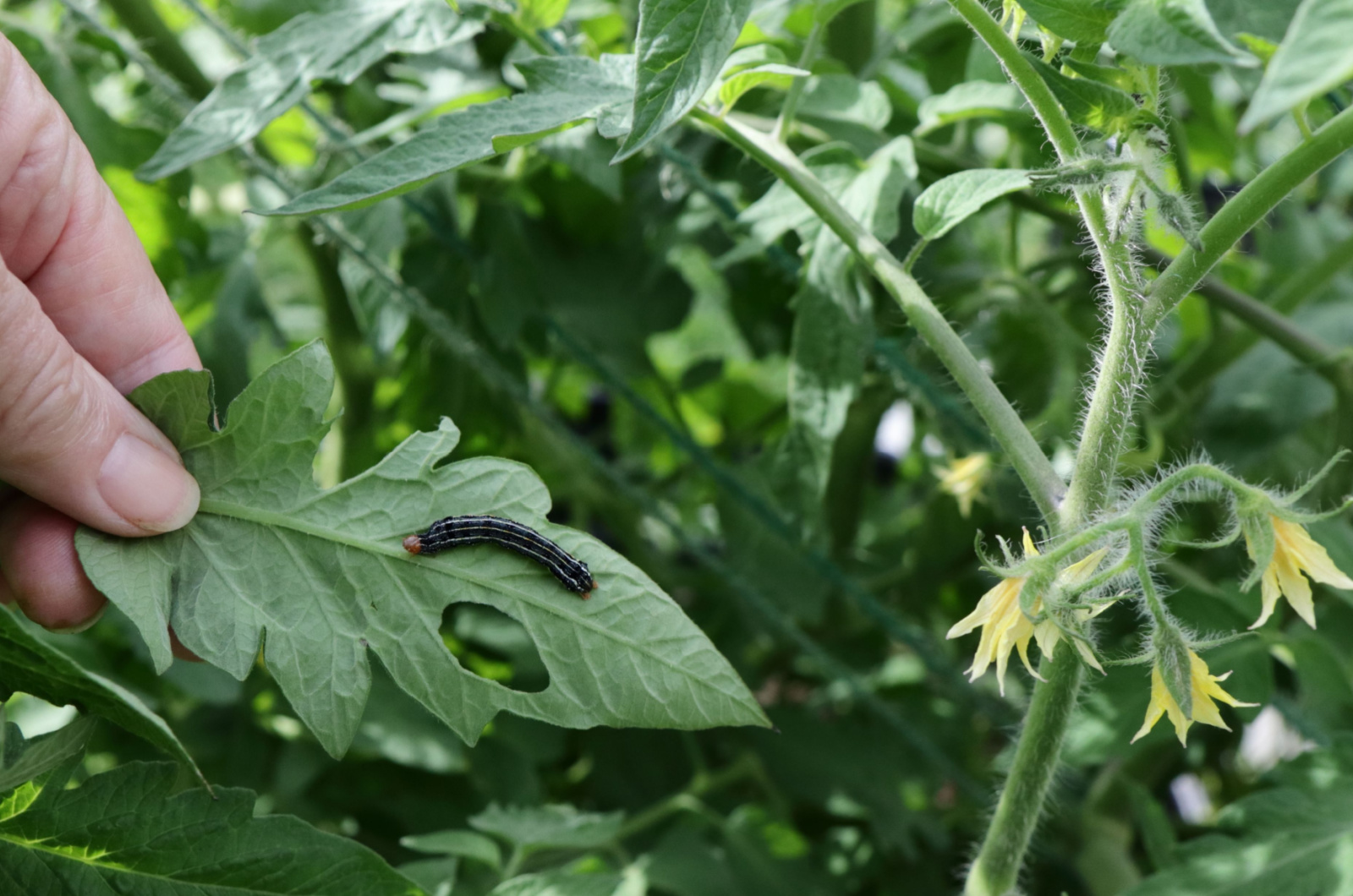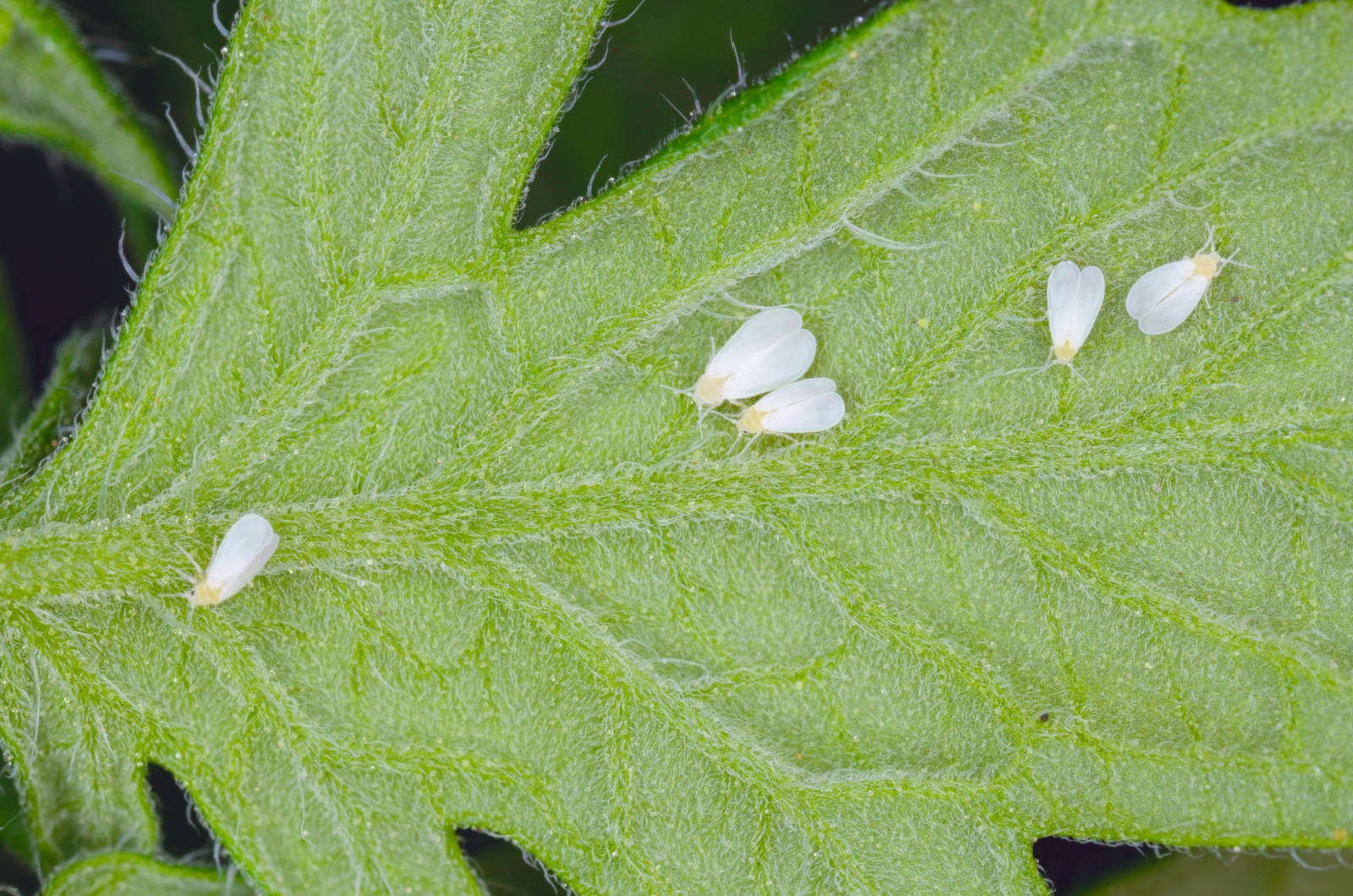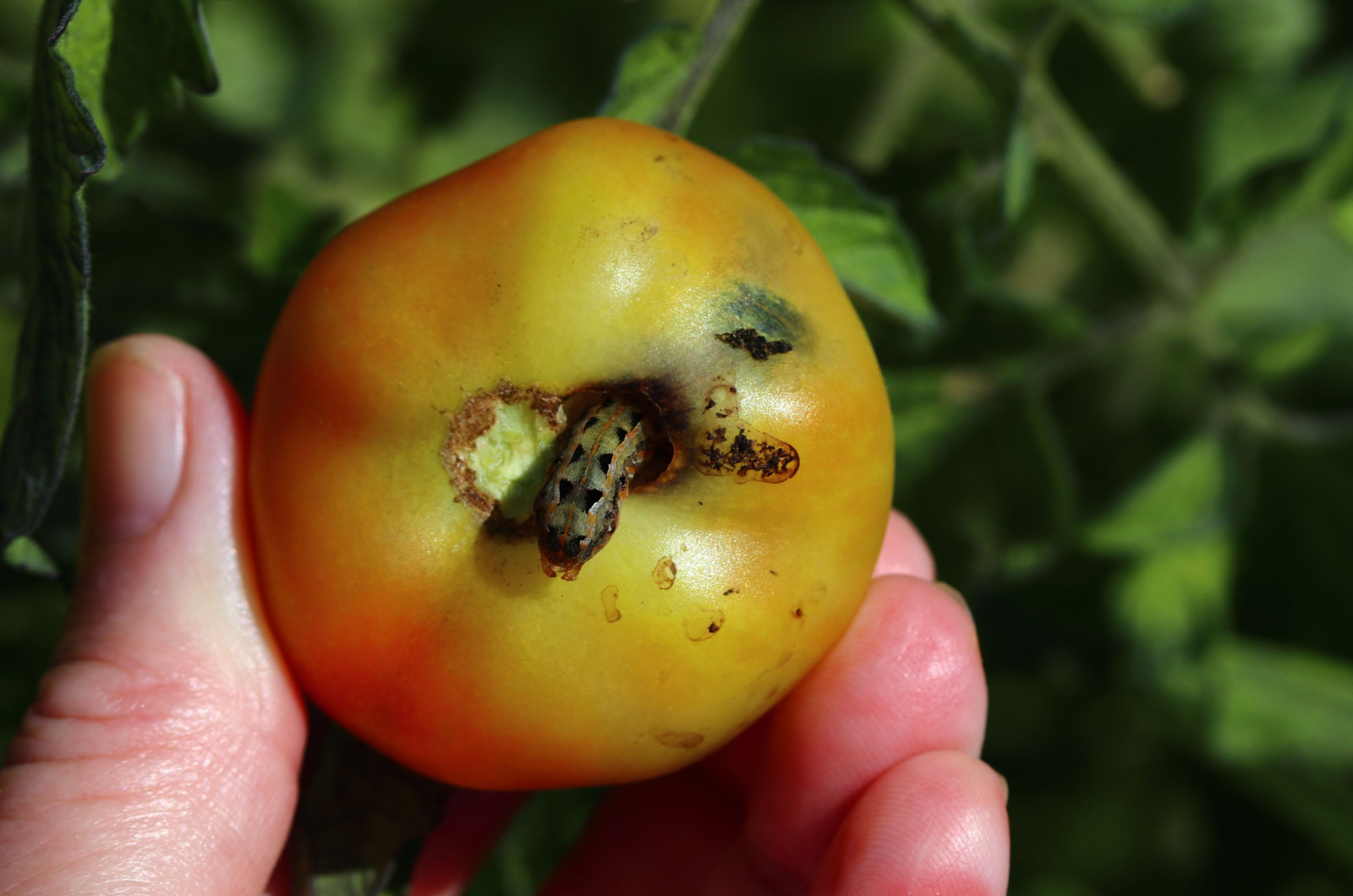Tomatoes are everyone’s favorite veggie to grow in the garden – they are easy-to-grow, super delicious, and relatively problem-free.
Still, you’ve got to keep an eye out for tomato plant pests that can potentially damage your plant and lead to reduced fruit production. If you keep your tomato plants happy and healthy, you have nothing to worry about!
However, if your tomatoes are a bit weak or fragile, you should inspect them for pests and see if they need to be treated. If you spot any pests, act immediately to get rid of them!
In this article, we are going to share some tips on how to identify and prevent these pests and ensure that your tomatoes flourish.
Let’s get started!
Hornworms
Hornworms are probably one of the most common tomato pests that gardeners encounter. They are large green caterpillars with a distinctive “horn” on one end.
These pests grow 3 or 3 ½ inches long, so they are easily spotted on the plant. They are voracious eaters that can defoliate a tomato plant in less than 24 hours.
These large green caterpillars can munch on your tomato foliage. Handpick them or use biological controls like predatory wasps.
What you can do: Handpick them and put them in soapy water. Introduce predatory insects such as braconid wasps. Hornworms that look like white grains of rice are parasitized and won’t feed on your plant, so you can just leave them.
This might be useful: These 10 Pest-Repellent Plants Will Keep Bugs Away From Your Yard
Stink Bugs
Stink bugs are identified by their shield-shaped, bright green or brown bodies. They pierce the plant and suck the sap, which leads to yellow spots on fruits that are often soft and spongy.
These little bugs usually attack your tomatoes in the middle of the summer, when the fruits just start to ripen.
What you can do: These might be trickier to get rid of as they overwinter in the wild. However, you can handpick them and use insecticidal soap; more importantly, keep your garden tidy and prevent them from overwintering.
This might be useful: Keep Stink Bugs At Bay With This Two-ingredient Repellent
Tomato Fruit Worms
These are worm-like insects with green-yellow to brown bodies that grow about 1 ½ inches long. They feed on fruits and leaves, which might lead to tomato splitting.
Tomato fruit worms enter unripe tomatoes, damaging them from inside – this is why you can spot them when you cut open damaged fruits. These annoyances can also damage the leaves and burrow into plant’s stalks.
What you can do: If the tomato fruit worm infestation is severe, you can use natural insecticides like Spinsoad, pyrethrin, or Bt. Use liquid ones because they are easily applicable and spread everywhere – make sure that it touches the eggs or larvae.
Aphids
Ahh, aphids. These are every gardener’s nightmare!
There are many different aphid species that attack tomato plants. They have soft bodies with pale yellow and green colors. These common garden pests munch on the plant, leading to deformed new growth and flower drop.
They rarely kill the entire plant but can significantly reduce the fruit production and make the plant susceptible to other pests and diseases.
What you can do: Use natural predators like lacewing larvae or lady beetles. You can spray them with a hose or use epsom salt to get rid of aphids. Pesticides can also kill beneficial insects, so use them sparingly.
Also read: This Simple Ingredient Can Protect Your Plants From Aphids
Cutworms
Cutworms damage the plant by cutting the stems and roots so the nutrients and water can’t pass through the entire plant. They have C-shaped bodies and are about 2 inches long.
These brown, green, black, or pink insects usually attract young tomato seedlings; but they rarely do it in the summer!
What you can do: If you notice that some of your garden plants start wilting or they are being cut off near the ground, cutworms are to blame. You can get rid of them by placing aluminum or cardboard collars around young seedlings – these will serve as a barrier.
Remember to till the garden bed and prevent cutworms from overwintering in the soil.
This might be useful: Keep Your Garden Safe By Getting Rid Of These 7 Pesky Pests
Silverleaf Whiteflies
If you grow tomatoes in tropical and subtropical regions, then you are probably going to deal with silverleaf whiteflies at some point. They are tiny insects that suck the sap out of your plant, which leads to leaf yellowing and stem wilting.
This damage leads to reduced fruit production. Plus, these critters can also spread diseases as they move from plant to plant.
What you can do: There’s nothing you can do about silverleaf whiteflies because they will find another host as soon as the weather changes. It’s best to provide your tomatoes with the best growing conditions so that they can grow robust and strong – pests won’t bother strong plants.
Related: 8 Simple Strategies To Get More Tomatoes And Boost Your Harvest
Armyworms
Different armyworm species attack tomato plants but, generally, they are all small larvae with yellow or creamy stripes on the sides of their gray bodies. They usually cause damage to as many tomatoes as possible within a fruit cluster, leaving tiny holes all over ripe fruits.
What you can do: When they are small, armyworm larvae can be controlled by Bt. Check your plant regularly and see if there are any armyworms sneaking by.
This might be useful: How To Attract Crows To Make Your Garden Pest Free

